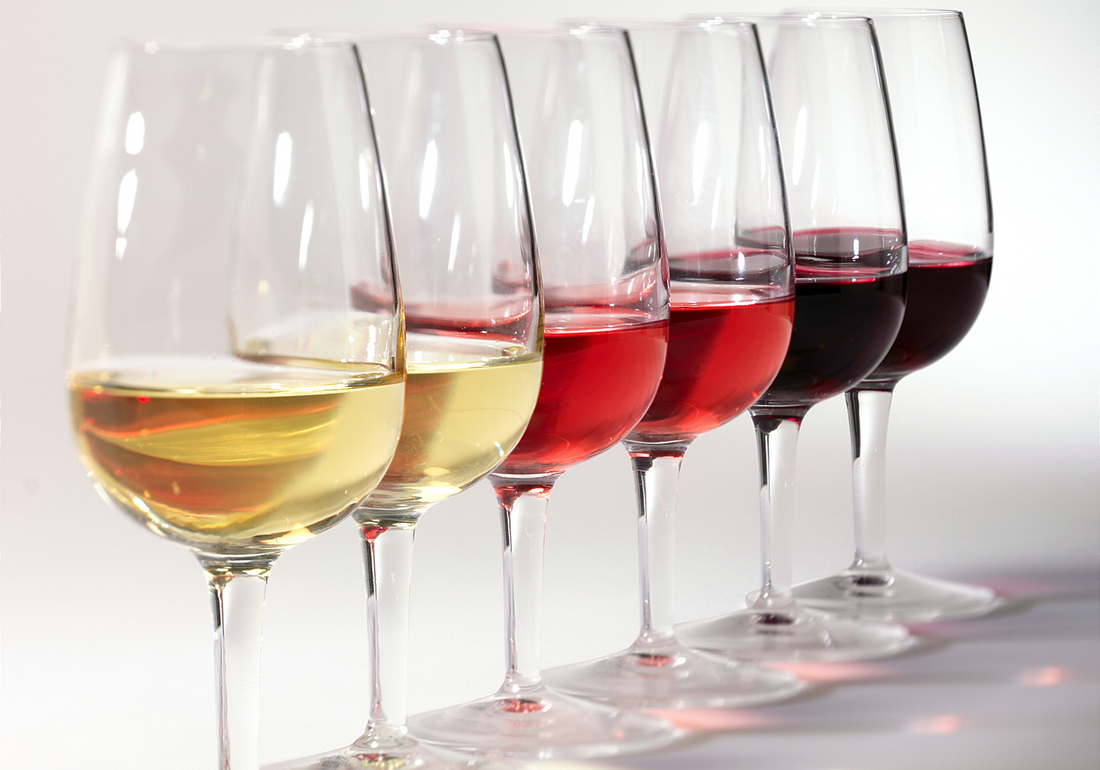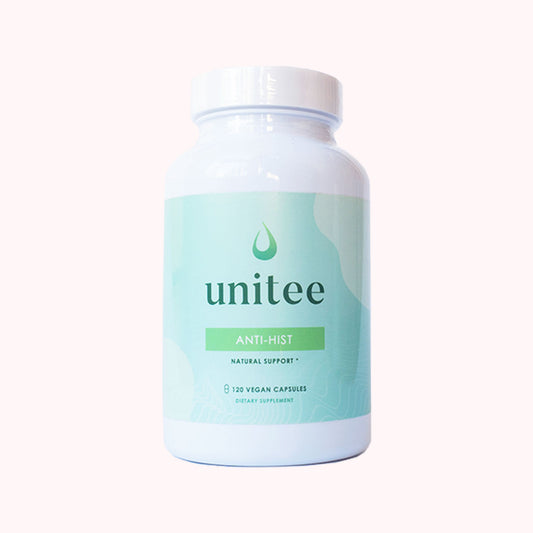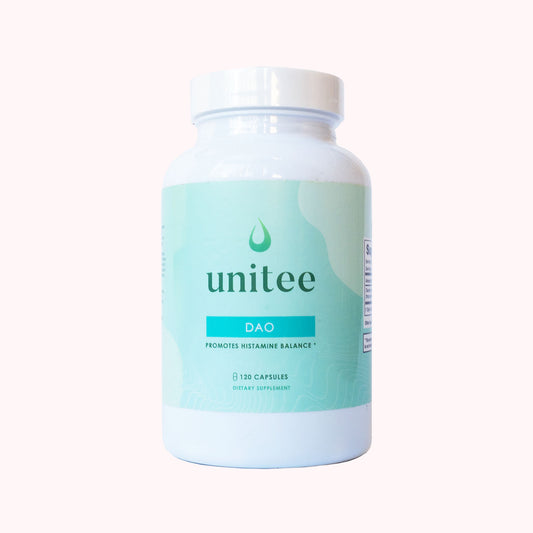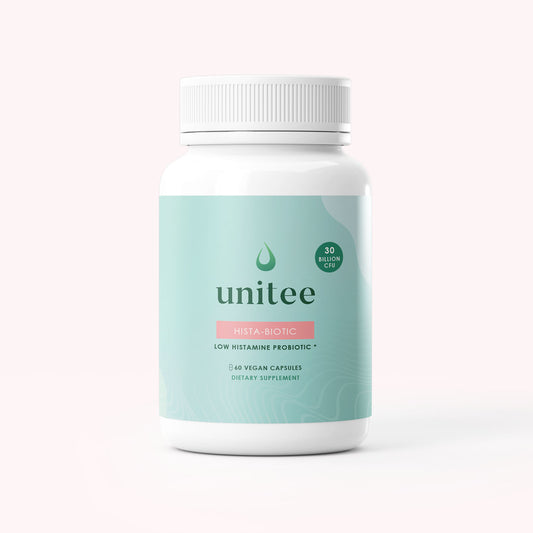Are you looking for a delicious low histamine wine to kick back and relax without any histamine intolerance symptoms?
I've got you covered.
Let's face it, we all like to indulge in rich, decadent delights.
You know the kind - you arrive at a dinner party and, before you, lies a table with all kinds of to-die-for treats spread out in front of you - exotic wines, cheeses, all kinds of meat, fresh vegetables and fruits.
Can you picture it? Of course you can.
Now, for a pop quiz - which of these are high histamine foods? The quickest way to spot the right answer is to pick out the oldies – anything aged or fermented will have its proteins broken down and naturally contain a high concentration of histamines.
Wines are a major culprit - most wines contain varying amounts of histamine and can cause adverse effects in histamine-intolerant individuals.
And there lies the question - how can you enjoy a glass of wine without aggravating histamine intolerance symptoms? The key: find a low histamine wine to tickle your taste buds.
Many people initially figure out they have histamine intolerance after sampling a glass of wine. The symptoms are similar to those that come from allergic rhinitis - sneezing, itchiness, nasal congestion and headaches.
But, the symptoms can vary and be body-wide and these reactions may only cover the tip of the iceberg.
So, if you want to savour a glass of low histamine wine after a long, hard day without breaking into a bout of unwanted histamine symptoms, how do you go about finding reliable, low histamine wines you can trust?
Believe me - I know the struggle, I went through it. And, that's exactly why I've created this low histamine wine list to make your life (and weekends) way easier.
Low Histamine Wine: Red or White
The science is out - if you're aiming for a low histamine wine, skip the red wine.
The less “red” your wine, the better. Sparkling, white and rosé wines all are lower histamine wines when compared to reds. And, it’s not even a small difference. Red wine can have as much as 20–200% more histamine than white wine (refer to the table below)!
These high histamine levels are incredibly important, as researchers claim that as many as 75% of those who experience symptoms following wine consumption are reacting specifically to the histamines present in wine, and this has been corroborated by several studies.
One study, known as the Red Wine Provocation Test, observed subjects with a history of wine intolerance, showing the majority of subjects to have significantly higher plasma histamine levels 30 minutes after drinking red wine. This study concluded a distinct correlation between reactions to wine and histamine intolerance [1].
In another study, histamine in wine appeared to induce constriction of airways in the lungs of subjects, leading to coughing, wheezing and shortness of breath [2].
Histamine levels have also been assessed across 52 wines and 17 beers. It was found that red wine had a significantly higher percentage of histamine when compared to white wines, champagnes and beers [1].
Histamine Levels in Different Kinds of Alcoholic Beverages*
|
Alcoholic drink
|
Histamine levels (micrograms/l)
|
|---|---|
|
Red wines |
60-3800 |
|
White wines |
3-120 |
|
Champagnes |
15-670 |
|
Beers |
21-305 |
Source: [1]
As you can see from the table above, when it comes to finding a low histamine wine, white wines are going to be a much safer bet than grabbing a bottle of red!
However, there is some overlap and simply choosing white won’t guarantee that you can leave the evening symptom-free. So, let's explore what other factors impact histamine levels in wine....
High Versus Low Histamine Wine: The Determinants
Histamine Content in Wine Grapes
The variety of grape has a significant impact on whether the wine will be lower or higher in histamine. Grapes that are higher in the amino acid histidine will produce higher histamine wines, because histidine converts to histamine during fermentation.
Additionally, histamine is more plentiful in the skin of the grapes. Therefore, grapes with thicker skins (such as those used to produce Tempranillo and Cabernet Sauvignon) will be higher in histamine.
The best wines to opt for are those produced from white or black grapes.
Wine Fermentation
Several factors of fermentation play a role. Wines that are fermented for a shorter period of time tend to be lower in histamine, as histamine levels increase during fermentation.
Additionally, wines that are fermented using steel barrels are also a better choice, as both wood or cement barrels are difficult to sterilize, and leave them open to the growth of mold or additional bacteria.
Additives, Stabilizers and Preservatives
One factor that causes many histamine intolerant individuals to react immediately to wine is sulfites, which may increase histamine levels or cause a sensitivity of their own. It is quite common now to find sulfite-free wines and it's always best to ensure this by double checking the bottle!

Wine and Histamine Headaches
Many people experience headaches after drinking alcohol. However, if you have chronic headaches, the one that comes the morning after enjoying a glass or two of wine might be a little more rough than the rest of us.
You are not alone in this. Several tests have shown that headaches can be induced by ingestion of wine. Sticking to a low histamine diet can prove a life-saver in helping those who have been suffering from chronic headaches [3] - and, sticking to drinking low histamine wine can actually reduce hangover symptoms.
Where Does the Histamine in Wine Come From?
Before we go into why fermented consumables, such as wine, contain high amounts of histamines, let us understand where amines come from.
***WARNING: Nerdy Science Talk Ahead***
Amines are a class of compounds derived from amino acids. When long chains of amino acids bind together, they form proteins. This means that any form of food in which protein degradation takes place invariably contains amines. This includes all kinds of alcoholic beverages, fermented vegetables and matured cheese.
So, what are the main amines found in foods? Histamine, tryptamine, putrescine, tyramine, isoamylamine, phenylethylamine, cadaverine, and spermidine, to name a few of the prominent ones.
Now that we know the correlation between wines and histamine intolerance, the question is, what are the best low histamine wines to drink if you’re histamine intolerant?
White wines are an obvious answer - Riesling made from thin-skinned white grapes, in particular - but, what if you fancy a bit of red and don't want to break into a bout of itching and sneezing?
In a 2011 study published by the Floridsdorf Allergy Centre, Austria, one hundred selected high-quality red wines made from seven different cultivars were tested for amine levels. Most of the wines had similar amine levels except for Pinot noir and St. Laurent wines, which had markedly higher tryptamine and cadaverine levels [4].
Additionally, as much as 34 % of the wines tested had more than 10 mg/l of histamine levels, a threshold level once adopted in several countries across the world. Scientists found that histamine levels varied considerably between red wines independent of grape variety and even high-rated wines had high amounts of histamines [4].
For example, when wines from 2004 and 2005 were compared, it was found that levels of histamine, putrescine and tyramine were higher in 2004 (a vintage with very good red wines) than in 2005 (a year delivering average red wine) [4].
Wine Manufacturing and Histamine Intolerance
As mentioned above, several factors of the manufacturing process, such as the types of barrels and duration of fermentation, can play a role in histamine content.
There's another factor that also influences histamine content in wine...
Malolactic fermentation - heard of it before? It's how all wine is made - malolactic fermentation is the conversion of the tart-tasting malic acid, found in grapes, to the milder tasting lactic acid by bacteria. Malolactic fermentation is what gives wine its mellow, rounded taste.
Advances in production technology may hold hope for all those red wine lovers who fear to pick up a glass due to the unhealthy after-effects from histamine intolerance, as scientists are now researching the use of alternate bacterial strains during the fermentation process to help lower amounts of histamines in wines and thus produce low histamine wine options.
It was earlier believed that high histamine levels were due to unhygienic manufacturing processes, though studies have shown that even high-quality wines contain large amounts of histamine. However, various studies have shown that a careful selection of strains used in the fermentation process can reduce the amount of biogenic amines in the final byproduct [5].
In a 2017 study published in The International Journal of Food Microbiology, a non-commercial strain of lactic acid bacteria, autochthonous O. oeni, was used as a starter for wine. The starter was introduced to inoculate 20,000 L of Tempranillo red wine. The results were encouraging, as the wine made from this strain had five-fold less histamine than the control sample. A year later, after barrel ageing had taken place, histamine concentrations were still three-fold lower than in the control sample [6].
These results provide a breakthrough for producing low histamine wine, in that the bacteria used to ferment the wine can play a crucial role. However, this information may not always be readily available as you're strolling around the shops, so we'll get specific with some low histamine wine brands in a moment.
Healthy Gut? Don't Overthink That Glass
So far, we have discussed the effect of red wine on histamine-intolerant individuals. What if you have no history of symptoms and would like to enjoy your wine?
Science indicates your gut is efficient enough to digest any amount of histamine that comes your way in wine. In one particular study, subjects were given either a histamine-rich or histamine-free wine. Blood and urine samples were taken and there was no intolerance symptoms or significantly elevated histamine levels in blood or urine. These results demonstrate that in a healthy individual, the histamine is degraded and absorbed appropriately [7].
To clarify, this little section is aimed at those who do not have histamine intolerance and are wondering if they have to focus on low histamine wines for health. It's likely going to be a no.
If, however, you're histamine intolerant, then of course all of the info in this article is extremely relevant.
Final Verdict: Wine and Histamine Intolerance
The verdict is still not out regarding the exact role of wine in histamine intolerance, and a team of scientists still hold the view that the connection cannot be conclusively proven. A 2001 study showed that similar adverse reactions were found in the case of histamine-rich and histamine-poor wines, and therefore the role of a histamine inducing substance such as acetaldehyde could not be ruled out [8].
In any case, through experience working with clients, the symptoms do seem to ease up when consuming low histamine wines. So, if you're going to be drinking wine, best to go with a low histamine glass.
Low Histamine Wines: A Comprehensive List*
We understand it's not quite easy to take along a long list of wines you can choose from when going grocery shopping (or wine tasting, for that matter). However, if you are histamine intolerant wine-lover, knowing all of the in-and-outs of high and low histamine wines is critical in reducing symptomatic consequences.
For this reason, I’ve done all of the work and research for you and put together the internet’s most comprehensive list of low histamine wine.
So, next time you’re getting a little loopy without the itchy skin and shortness of breath, think of me, my friends.
Low Histamine Wines: How to Choose
General Rules for Selecting Wine
As a general rule, we now know to avoid long-fermented wines and those produced in cement or wood barrels. Opting for wines that go through a shorter fermentation process in a stainless steel barrel is best.
Additionally, we know to avoid wines produced from thick-skinned and / or red grapes. Common examples are Cabernet sauvignon and Tempranillo wines. Instead, opting for wines produced from thin-skinned grapes of a white or black variety will be best. A common example includes Riesling wines.
Additionally, focusing on wines that are free from sulfites and other additives or stabilizers is best for avoiding histamine increases or cross-reactions.
Low Histamine Wine Brands List
The following wines have been tested and certified to have less than 0.5 mg/l of histamines. And, to make things even better, they come capped with an orange lid, making them easy to identify on the countertop.
- Dolcetto D’Alba Doc Low Histamine
- Diano D’alba Doc Low histamine
- Barbera D’Alba Doc Low Histamines
- Langhe Chardonnay Doc Low histamines
Additionally, I have had a lot of feedback from clients about using a wine wand to reduce histamine levels and tolerate more wine. I have never personally used one, as I learned about this after I solved my histamine intolerance - however, I do mention it because of the significant amount of positive reviews I have directly heard.
If you would still like to try a non-certified wine, below is a list of the levels of histamine in different types of wine and other alcoholic beverages.
Histamine Levels in Wine and Beer
Histamine in White Wine
Maximum 120 μg/l
Average 37 μg/l
Minimum 3μg/l
Histamine in Red Wine
Maximum 3800 μg/l
Average 1010 μg/l
Minimum 60 μg/l
Bordeaux France 2200 μg/l
Chianti Italy 1930 μg/l
Histamine in Champagne
Pommery France 670 μg/l
Histamine in Dessert Wine
Maximum 400 μg/l
Average 280 μg/l
Minimum 80 μg/l
Histamine in Sparkling Wine
Maximum 78 μg/l
Average 46 μg/l
Minimum 15 μg/l
Histamine in Rose Wine
Maximum 61 μg/l
Average 40 μg/l
Minimum 15 μg/l
And, for those of you beer lovers...
Histamine in Wheat Beer
Maximum 305 μg/l
Average 211 μg/l
Minimum 117 μg/l
Histamine in Regular Beer
Maximum 52 μg/l
Average 32 μg/l
Minimum 21μg/l
Budweiser USA 28 μg/l
Histamine in Alcohol-free Beer
Maximum 38 μg/l
Average 26 μg/l
Minimum 15 μg/l
* Source: [1]
Now that you know what to expect from alcohol when you're living with histamine intolerance, I hope you're able to tolerate the occasional drinking without it sending your symptoms soaring!
References
- Wantke F, e. (1994). The red wine provocation test: intolerance to histamine as a model for food intolerance. Allergy Proc. 1994;15(1):27-32. doi:10.2500/108854194778816599
- Wantke F, Hemmer W, Haglmüller T, Götz M, Jarisch R. Histamine in wine. Bronchoconstriction after a double-blind placebo-controlled red wine provocation test. Int Arch Allergy Immunol. 1996;110(4):397-400. doi:10.1159/000237333
- F, J. (1996). Wine and headache. - PubMed - NCBI. [online] Ncbi.nlm.nih.gov.
- Konakovsky V, Focke M, Hoffmann-Sommergruber K, et al. Levels of histamine and other biogenic amines in high-quality red wines. Food Addit Contam Part A Chem Anal Control Expo Risk Assess. 2011;28(4):408-416. doi:10.1080/19440049.2010.551421
- Smit, A. Y., du Toit, W. J., & du Toit, M. (2016). Biogenic Amines in Wine: Understanding the Headache. South African Journal of Enology & Viticulture, 29(2). doi:10.21548/29-2-1444
- Berbegal C, e. (2017). Lowering histamine formation in a red Ribera del Duero wine (Spain) by using an indigenous O. oeni strain as a malolactic starter. - PubMed - NCBI. [online] Ncbi.nlm.nih.gov.
- Kanny G, e. (1999). Histamine content does not influence the tolerance of wine in normal subjects. - PubMed - NCBI. [online] Ncbi.nlm.nih.gov.
- Kanny G, e. (2001). No correlation between wine intolerance and histamine content of wine. - PubMed - NCBI. [online] Ncbi.nlm.nih.gov.

Anita Tee
My name is Anita Tee. I'm a nutritional scientist who specializes in histamine intolerance. I hold a Master of Science in Personalized Nutrition and a Bachelor of Science in Human Biology and Psychology.
For the past ten years, I have used my experience in nutritional and medical health sciences to create a scientifically backed, natural approach to healthcare that relies 100% on evidence-based research.
As I previously suffered from - and overcame - histamine intolerance, my focus is to increase recognition and expand the available resources and protocols available for resolving this particular disorder. To date, I have helped over 4,000 individuals fully resolve or better manage their histamine intolerance symptoms.







